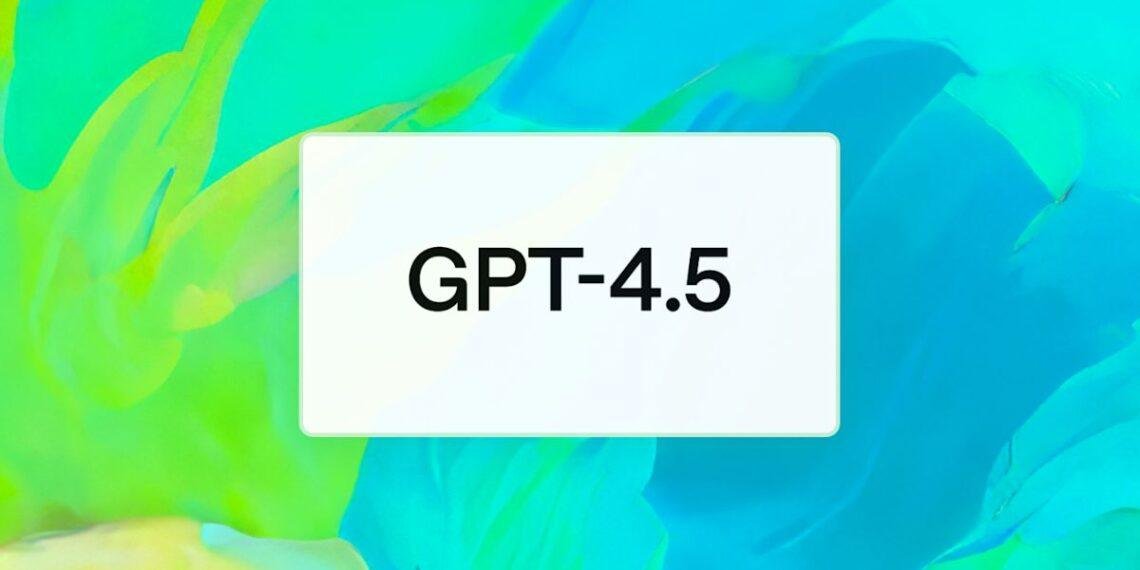OpenAI has once again redefined the artificial intelligence landscape with the release of GPT-4.5, its most advanced language model yet. Launched on February 27, 2025, this cutting-edge AI promises more natural interactions, heightened emotional intelligence, and a major reduction in misinformation, setting a new standard for AI-powered conversations.
Dubbed “Orion” internally, GPT-4.5 marks a major breakthrough in AI development by focusing on unsupervised learning—a technique that allows it to recognize patterns, generate insights, and enhance creativity without relying heavily on structured reasoning. Unlike its predecessors, which leaned toward logical step-by-step reasoning, GPT-4.5 prioritizes intuitive dialogue, making its responses feel more human-like, engaging, and emotionally aware.
One of the biggest highlights of GPT-4.5 is its ability to understand user intent more accurately than any previous model. OpenAI’s internal tests reveal that it excels at picking up subtle emotions and context, making it a powerful tool for tasks like writing assistance, software development, and problem-solving. With a broader knowledge base and real-time search integration, users can expect faster, more reliable, and more informative responses.
Read Also: BlockDAG Set for Launch on March 28: A game-changer in Crypto space
Currently, GPT-4.5 is available exclusively for ChatGPT Pro subscribers ($200/month) and API users across all paid tiers. However, OpenAI has assured that ChatGPT Plus ($20/month) and Team users will gain access next week, followed by Enterprise and Education users shortly after. Due to overwhelming demand, OpenAI CEO Sam Altman acknowledged GPU shortages affecting the rollout but promised a rapid scale-up with tens of thousands of new GPUs coming next week.
The AI model introduces several game-changing features, including improved accuracy (significantly fewer AI “hallucinations”), enhanced emotional intelligence, and expanded support for file and image uploads. Users can also leverage ChatGPT Canvas Mode, a powerful tool for collaborative writing and coding projects. However, GPT-4.5 still lacks multimodal capabilities like Voice Mode, video, and screen sharing, though OpenAI has hinted that future updates could bridge these gaps.
One remarkable demonstration of its intelligence was its analysis of Claude Lorrain’s painting The Trojan Women Setting Fire to Their Fleet, where it not only identified the artwork but also provided deep literary context from The Aeneid. This level of contextual understanding showcases how far AI has come in bridging the gap between data and human-like reasoning.
Looking ahead, GPT-4.5 will be OpenAI’s final non-chain-of-thought model, meaning it does not rely on step-by-step reasoning like its upcoming successors. Altman has hinted that GPT-5, expected later this year (potentially by May 2025), will merge multiple AI technologies into a single, streamlined model, eliminating the need to switch between different AI types. OpenAI aims to simplify its product lineup, addressing user frustrations over model complexity.
Pricing for GPT-4.5’s API is on the higher side, at $75 per million input tokens and $180 per million output tokens, reflecting the model’s intense computing requirements. However, despite the high costs, competition in the AI space is heating up. Companies like DeepSeek, xAI (Elon Musk’s Grok 3), and Anthropic are pushing aggressive advancements in AI technology, threatening OpenAI’s dominance.
With over 400 million weekly active users and 2 million enterprise users, OpenAI remains a leader in the generative AI race. The GPT-4.5 research preview is still in its early phase, with OpenAI actively gathering user feedback to refine the model before its full-scale release.
As AI continues to evolve, GPT-4.5 stands as a defining moment in the quest for more human-like, intuitive, and powerful AI interactions. Whether it’s transforming customer support, revolutionizing content creation, or powering advanced coding solutions, this latest breakthrough sets the stage for a new era of artificial intelligence.






